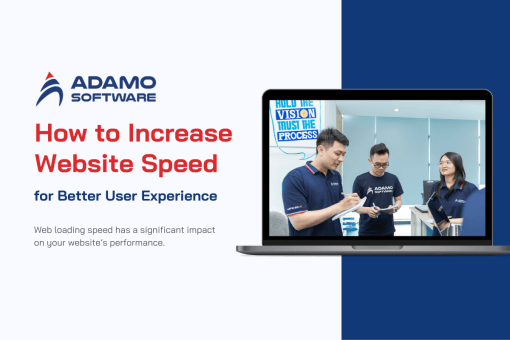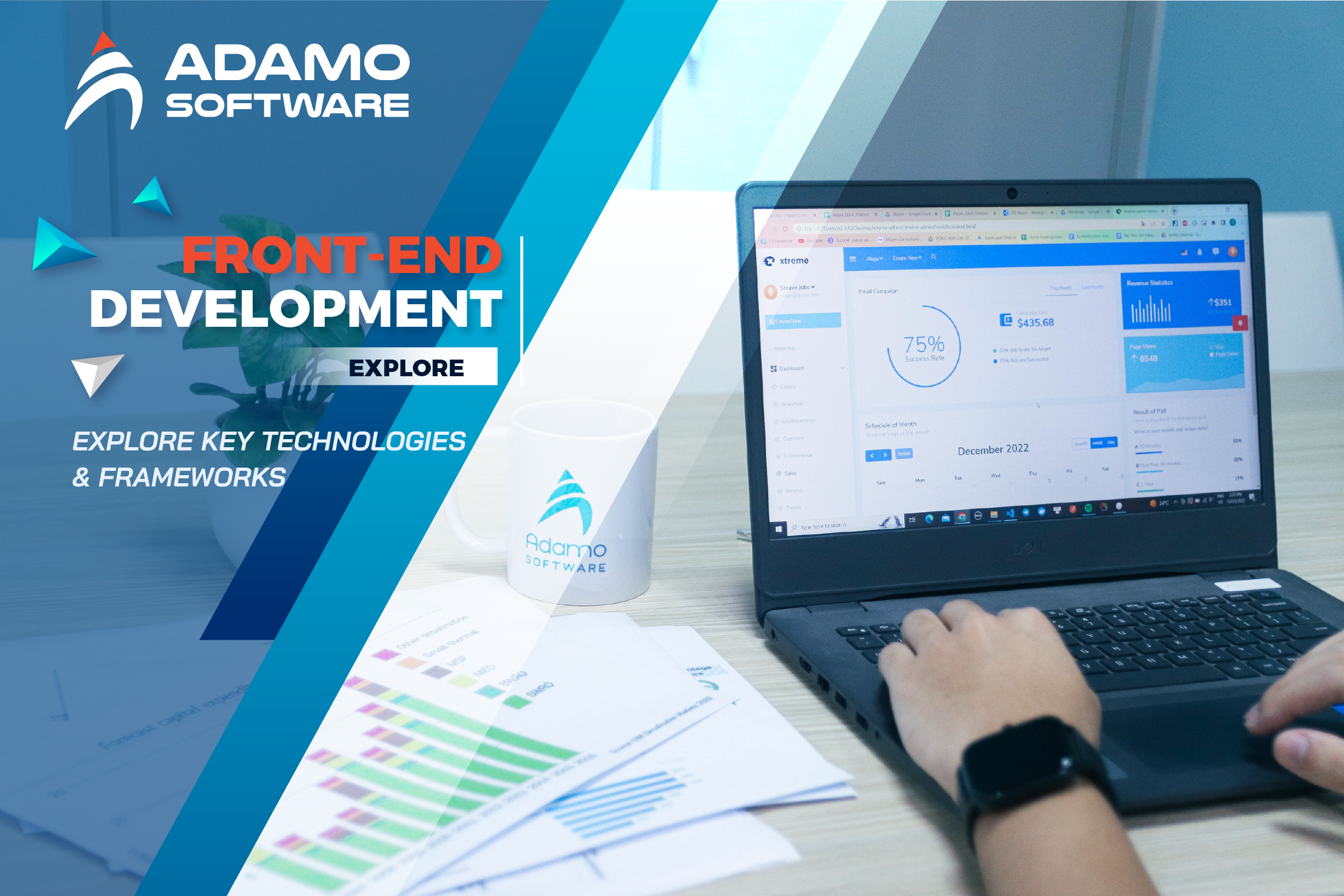Progressive Web Application: Core Features, Benefits, Challenges & Best Practices

Progressive Web Application (PWA) use modern technology and best practices to provide reliable, accessible, and engaging experiences. Check it out.
You can order food instantaneously via the company’s app. Same if you require government services. App-based medical emergency dialing is available. From banking to learning to trading to shopping, there are apps for everything. All businesses have apps, and even governments have simplified their services into apps.
Building and maintaining an app is difficult and expensive for small businesses. How do they cope? The answer is simple: technology helps small enterprises. Progressive Web Apps integrate app capabilities with web development technology to create economical corporate offerings.
I. What is a progressive web application?
Progressive Web Application (PWA) is a type of web app that functions on any device as both a web page and a mobile application. It is an excellent solution for your online store’s poor mobile UX and low conversion rates. PWA aims to provide a native-like user experience, with faster conversion and cleaner browsing even while connected to a slow Internet connection.
In addition, PWAs are written in JavaScript, CSS, and HTML. They look and behave exactly like regular web pages (which means they can be searched in Internet browsers). However, they also provide characteristics that are equivalent to those provided by mobile apps: they are fast, can run offline, send push notifications, and employ user device features.
Furthermore, PWAs can be uploaded to popular app marketplaces such as the App Store and Google Play.
Because they do not imply any specific implementation, PWAs are difficult to define. Google, the company that invented them, isn’t much help, as its official introduction is vague. It states that PWA is:
Reliable – Load instantly even in unstable network conditions.
Fast – Responds to user events swiftly, with silky smooth animations and no uneven scrolling.
Engaging – The software feels natural on the smartphone and provides an engaging user experience.
II. How progressive web applications drive your business success: Examples included
1. Low Data Usage of progressive web application
Progressive web apps use a fraction of the data used by native apps and require less storage on the device, contributing to better smartphone performance.
Uber created a progressive web app that runs on 2G networks to provide its users who use low-end mobile devices with a similar web experience as their mobile app. Therefore, you can use Uber’s PWA to book a ride regardless of your network speed, device, or even location. This is especially useful if you’re in an area with spotty service or if your phone isn’t compatible with their mobile app.
2. Work offline
PWA has transformed the internet user experience by allowing them to work offline with the same ease and speed that they do online.
Starbucks’ progressive web app is quite similar to its native mobile app, with the main distinction being that it operates offline. When you’re offline, you can utilize their PWA to explore their menu, personalize your orders, and add products to your cart. When you’re online, you may compare pricing and place orders for each store location.
3. Remarkable user experience
PWA provides an exceptional experience for its consumers and company owners. On the one hand, it uses less data and storage, loads faster, and is less expensive. On the other hand, it boosts conversion rates, page speed, and user session length, and considerably reduces bounce rate.
Pinterest rebuilt their mobile app into a progressive web application after seeing that only 1% of their mobile users converted into sign-ups, logins, or native app installs due to their app’s poor user experience (a 23-second load time). Within three months, their PWA witnessed a 40% increase in time spent more than five minutes, a 44% increase in user-generated ad income, and a 50% increase in ad click-throughs when compared to their former mobile app.
4. Low cost of progressive web application
For businesses, establishing a progressive web application is substantially less expensive than designing a native app.
The native mobile app of MakeMyTrip accounts for more than two-thirds of the site’s traffic and half of its bookings. However, after developing a PWA, they discovered that driving users to their mobile website was significantly less expensive than driving app installs.
5. Great for SEO
PWA can improve your app’s accessibility and searchability. Your PWA will be indexed quickly, and it will deliver an excellent user experience, all of which will contribute to the success of your SEO strategy. Furthermore, you can incorporate PWAs into your existing online marketing strategy.
Bookmyshow loads in 2.94 seconds without sacrificing user experience, increasing conversions by more than 80%.
III. Features of PWA and differences between Progressive Web Apps vs Native Web Apps
1. Key progressive web application features
1.1. Full responsiveness and browser compatibility
These apps are created using the concepts of progressive enhancement principles. Progressive enhancement is a web design method that aims to provide basic functionality and content to everyone, regardless of browser or connection quality. Meanwhile, it gives more advanced page versions to users with newer browsers that can support them.
As a result, PWAs are compatible with all browsers and devices, regardless of screen size or other specifications. Users of tablets and smartphones will get the same experience. You can also customize the app on the desktop if necessary.
1.2. Connectivity independence
Progressive web applications can function both offline and on low-quality networks.
1.3. App-like interface
These apps replicate native app navigation and interactions.
1.4. Push notifications
When used as part of a solid message strategy, may keep customers interested and motivate them to open and use an app more frequently.
1.5. Self-updates
Apps that can update themselves automatically keep up to date.
1.6. Security
Because these apps employ HTTP, unauthorized users cannot access their content.
1.7. Discoverability and easy installation
While search engines consider PWAs as applications, they are not available through app stores. These programs can be easily found by sharing them via a URL. The installation is straightforward and consists of visiting a website and adding it to a device’s home screen.
Besides, you explore other web application development services. What is the devOps consulting services and why is crucial?
2. Progressive web apps vs native web apps
| App Type | Description | Installation | Access to device’s features | Connection dependency | Update delivery |
| Native App | The app is designed and optimized for specific mobile OS, such as Apple’s iOS or Google’s Android. | The application is directly installed on a device. The installation process includes visiting an app store, accepting multiple permissions, and signing in. | Complete control over the device’s functions. Customization of system settings. | Some apps’ operation is dependent on a network connection. Some apps do not require an internet connection. | Before releasing an update, it must conform with the rules of the app store. It takes developers longer to make it available to users. |
| Web app | The program is hosted on a distant server and provided to users via a browser interface. | Installation of a device isn’t required. | Limited access to device hardware (for example, access to geolocation or Bluetooth). | App doesn’t work without a connection. | An update is promptly delivered to users. |
| Progressive web app | The website or pages of a website that have app-like features and an interface. | A device does not have the app installed. To utilize the software, a user must first visit a website and add it to their home screen. | Access to the device’s features is limited. | The program works with any internet connection and preserves some of its functionality for offline use. The offline mode indicates that the interface and content are still accessible due to caching. | Without app store clearance, all users receive an instant and automated update. |
IV. Progressive web application examples

1. Tinder
Tinder is one of the best dating apps in the world, with more than 75 million users. Over 7.8 million people in the US use the app every day, making it the most famous in that country.
At one point, you could only use Tinder on your phone. But its progressive web application gives users a smoother experience, no matter what browser or device they use to reach the platform.
Tinder’s progressive web application uses a lot less data than the desktop app, as does almost every other PWA. This lightweight app not only takes up less space on users’ phones but also helps Tinder get more people to interact with each other.
2. Pinterest
Pinterest is a one-of-a-kind social media platform with an easy-to-use pinboard layout that lets people share artistic ideas, find recipes, plan projects, and more. The original Pinterest app wasn’t very good. It was hard to use and didn’t do a good job of bringing the pinboard system to mobile devices.
By rebuilding its app with PWA technology, the company gave it a whole new look. The new app makes using Pinterest easier, which makes people stay on the site longer and brings in more money for Pinterest.
PWA technology worked great with Pinterest and the way it delivers information. People who use Pinterest want to be able to quickly and easily find visual material that is easy to understand. And the PWA gives you all of that and more.
3. Uber
The company that shares rides also has a progressive web application. Uber rebuilt its old website from scratch and replaced it with a PWA to reach new customers. Leaders of the company knew that if they wanted to get a bigger part of the market, the web app had to offer the same booking experience as the native mobile app.
Best thing about the Uber PWA is that it doesn’t take up much space and works on slower networks. This lets more people use the app, even those who have limited network and storage resources.
4. Trivago
Trivago is one of the largest hotel search engines in the world. While the company already had a significant presence in its sector, mobile devices accounted for a large portion of its traffic. This should come as no surprise given that mobile devices account for 59% of all web traffic.
This app opted to implement a PWA in 2017 to make its services more accessible. Because of its capacity to run offline, the PWA may assist users in avoiding annoying service outages when boarding an elevator or driving through areas with poor service.
Progressive web app of Trivago received an incredible response. Trivago has seen a 150% boost in interaction after deploying its PWA. In addition, conversions increased by 97%. Furthermore, the company discovered that users returned to the app at least twice in the 14 days following the installation of the PWA on their devices.
5. Spotify
While all the progressive web application examples on our list highlight PWA success stories, Spotify stands out as one of the most famous. Since switching to PWA technology, the music-streaming company has grown. The Spotify PWA provides everything customers expect from a PWA such as simple, fast, dependable, and unobtrusive.
Spotify debuted its PWA in 2019, the same year the streaming service’s popularity skyrocketed. Spotify saw a 46% increase in free-to-paid conversion after implementing its PWA. Its conversion rate was only 26.6% four years ago.
6. Starbucks
Starbucks used a PWA for its ordering system, which provided the coffee company with functionality that a traditional website does not. Customers may use the Starbucks PWA to place orders, explore the menu, and much more without having to download a separate mobile app.
One of the major advantages is that this PWA is available offline, which means that consumers can explore the menu and add items to their carts even if they don’t have internet access. When service is restored, they can instantly return to finish their orders.
7. Twitter Lite
Twitter is well-known as a fast-paced social media site. However, Twitter was not always the lightweight, adaptable program that it is today. Although the great majority of Twitter users access the site via mobile devices, past editions of the app lacked agility and adaptability.
To address this shortcoming, Twitter developers replaced the app with a PWA called “Twitter Lite” in 2017. The outcomes were outstanding.
The platform saw a 75% increase in tweet volume and a 65% increase in pages per session. Moreover, its bounce rate has also decreased by 20%. The PWA gave users access to an optimal combination of web and native mobile app features, resulting in an amazing user experience.
8. Telegram
Telegram, an alternative communication app, had around 500 million registered users in 2021. Users can utilize this cloud-based platform to send encrypted messages, join chats, and create threads. Like Twitter, Telegram is all about providing users with an agile, efficient experience.
However, Telegram’s flagship native mobile app was anything but agile. It was based on antiquated architecture and created a friction-filled experience. To address these flaws, Telegram developers deactivated the outdated app and replaced it with a progressive web application.
The new PWA gave users a safe environment to exchange and receive messages. It’s because it provided some offline functionality as well as a quick and simple user experience.
9. Facebook
Facebook, always one to push the technical frontier, was one of the early adopters of progressive web application technologies. In 2019, social media titan relaunched its PWA to provide consumers with an alternative to its native mobile app.
While the latter is still extremely popular, the PWA was well-received. Like Twitter Lite, Facebook provides an agile experience while taking up less space on users’ smartphones. These features make it interesting to both casual and avid Facebook users with limited storage capacity.
10. Google Maps
Google created a PWA version of its Maps app for phones with limited bandwidth and computing capability.
The PWA, a condensed version of the normal app, provides most of the functionality of its larger counterpart while taking up less space on the user’s mobile device. Consequently, more people can use the Google Maps platform.
Users can connect to Google Maps PWA in a variety of ways. Like other progressive online applications, it can be accessed by launching the mobile browser on a smartphone. Android users can also get the PWA from the Google Play Store.
V. How progressive web applications work: Explained
A PWA is, at its core, a website that can be installed on your device (phone, tablet, PC, or Mac), complete with an app icon/shortcut. When a user launches a PWA, it will download updates in the background. When you upgrade your web application, not only visitors to the app site but also PWA users, will receive access to new features all without explicitly completing any kind of update.
When a user interacts with the PWA, it can evaluate the device’s capabilities and load more data in the background. This opens options for preparing for future encounters, resulting in a more capable application. PWAs can also provide app-like enhanced functionality that was previously unavailable to webpages, such as offline usage, notifications when new data is available, and various other benefits. This gradual unfurling of functionality based on the user’s device occurs on the same code base and in parallel with browser users of your website.
VI. How to build a progressive web app
1. Building the app shell
The app shell is the PWA’s main user interface, and it should be designed to load quickly and give a consistent user experience. You should focus on decreasing the number of requests required to load the shell and optimizing the size of the assets when designing an effective app shell.
2. Implementing service workers
PWAs rely heavily on Service Workers, which allows them to work offline and send push notifications. To use Service Workers in a PWA, build JavaScript code that intercepts network queries and caches the results.
3. Creating a web app manifest
The Web App Manifest is a JSON file containing information about the PWA, such as its name, icon, and URL. To generate a Web App Manifest for a PWA, it is necessary to specify the manifest file’s attributes, such as the name, short name, and icons.
4. Adding extra features
Additional features, such as push notifications, geolocation, camera access, and more, can be added to PWAs. Implementing these features in a PWA requires the development of JavaScript code that communicates with the appropriate APIs.
5. Testing the progressive web application
Testing is a critical component of PWA development. There are various tools and techniques available for doing so. Lighthouse, which assists in auditing the PWA’s accessibility and performance, and Chrome DevTools, which facilitates debugging and testing across various platforms and devices, are two such applications.
6. Deploying the progressive web applicationn
To put a PWA into use, you need to package it in a way that makes it work on multiple devices. For example, an APK file for Android or an IPA file for iOS will work.
7. Optimizing the progressive web application
A few things can help improve the performance of a PWA: reducing file sizes, leveraging browser caching, and lowering the number of requests needed to start the PWA. One important trick is to use a Service Worker to store the PWA’s files. Consequently, it can load faster and work when you’re not online.
8. Monitoring and updating the PWA
It is critical to continuously monitor and update the PWA to ensure that it is performant and up to date with the latest web technologies. This can include using tools like Google Analytics to analyze the PWA’s usage and performance, as well as changing the PWA’s code to take advantage of new web APIs and capabilities.
Explore more what is pair programming? Benefits, challenges & best practices.
VII. Best progressive web application tools and technologies
1. Ionic
Ionic is a sophisticated PWA solution based on Apache Cordova and the Angular framework that works on an advanced tech stack, allowing developers to leverage rival frameworks. It includes a robust toolset for addressing PWA functionality. For example, UI elements, unit testing, pre-built routing, and so on.
It’s a wise choice for people transitioning from Cordova/Phone Gap to cross-platform mobile app development and responsive web apps.
2. Polymer
Polymer is a lightweight JavaScript framework developed by Google that includes various PWA features. It contains a large number of templates and some of the best documentation. One of the greatest PWA development tools for developing reusable components and syncing data with devices is Polymer. Consequently, this simplifies the entire development process. Polymer is a good PWA solution that provides APIs and uses PRPL patterns for better optimization.
3. AngularJS
AngularJS, as one of the oldest JS frameworks and the third most popular PWA development technology, follows a well-defined and mature methodology. It is well-equipped with all techniques, allowing developers to simply add new features. As a result, the process of swiftly building a PWA is simplified. It has one of the largest communities and is constantly in contact with Google for regular updates.
4. VueJS
VueJS is an open-source and one of the most advanced JS frameworks, extensively utilized due to its simple development feature. It is a standard choice for constructing smaller projects and MVPs. Moreover, it is one of the fastest-evolving libraries due to its ease of scripting and high-speed rendering. VueJS orders quick app delivery in addition to easy writing and rendering and precise and extensive documentation.
5. React PWA Library
The ReactJS framework is used to build both single-page and multi-page apps. Developers can use extra JS libraries to create server-side and client-side rendered pages, routing, and API integrations. ReactJS, as one of the best choices for PWA development, provides better documentation, rich libraries, ecosystem support, a large developer community, and so on, making it a fantastic choice for constructing PWAs.
6. PWA Builder
Microsoft-supported PWA Builder is suitable for quickly and efficiently converting websites into PWAs with little developer work. Because it has simple and intuitive features, almost all web development firms use PWA Builders. PWA Builder detects whether the site can support PWA features automatically. All you have to do is copy and paste your website’s URL into the PWA Builder’s URL field.
7. Magneto PWA Studio
It is a toolkit developed to aid in the development of a PWA Storefront on top of a Magento responsive website. Magento PWA Studio is designed for the Magento 2 platform and includes numerous tools and advanced libraries that adhere to the M2 extensibility paradigm. It makes use of advanced libraries and tools that adhere to the platform’s extensibility paradigm.
8. Lighthouse
Google launched Lighthouse to ensure the quality of PWAs and to test them for bugs before they are released. Furthermore, it improves the quality of the apps. Lighthouse evaluates websites based on numerous criteria and provides the factors to consider verifying that the website is ready to become a PWA. It examines digital offerings and recommends opportunities for improvement in the PWA development process.
9. ScandiPWA
ScandiPWA is a ready-to-use solution that includes an open-source Magento theme but does not include a set of tools. This theme does not necessitate the use of middleware, additional services, or databases. The lack of a middle layer does not affect the performance of PWA apps. The tool supports various languages, stores, currencies, domains, and other features. Scandi takes advantage of GraphQL, which allows pages to render faster due to the single-page app strategy.
VIII. Why choose Adamo as a Trusted Web-based Application Development Company
As a premier software development company in Vietnam, Adamo helps you transform diverse and complex business ideas to life. Besides offering progressive web application services, Adamo dedicated development team also provides lots of web-based application software solutions such as low code or no code, front-end development, back-end development and devOps consulting services. If you want to create custom web-based application software solutions for your business, you can contact us for more detail.











